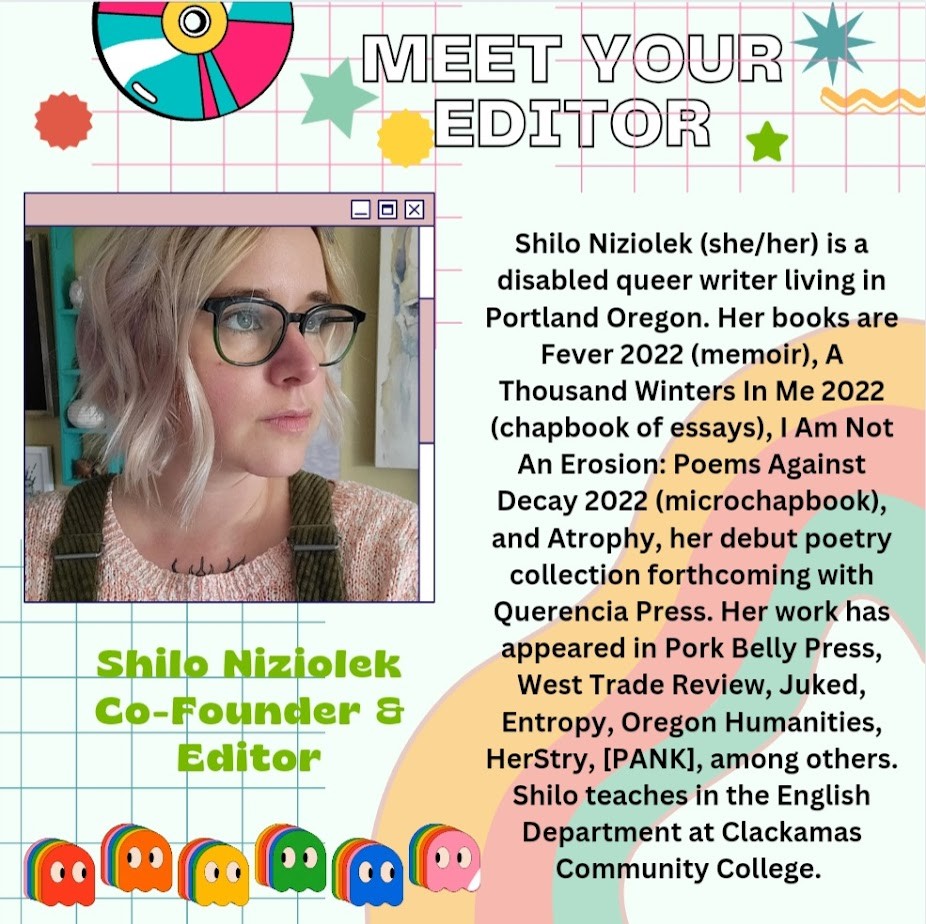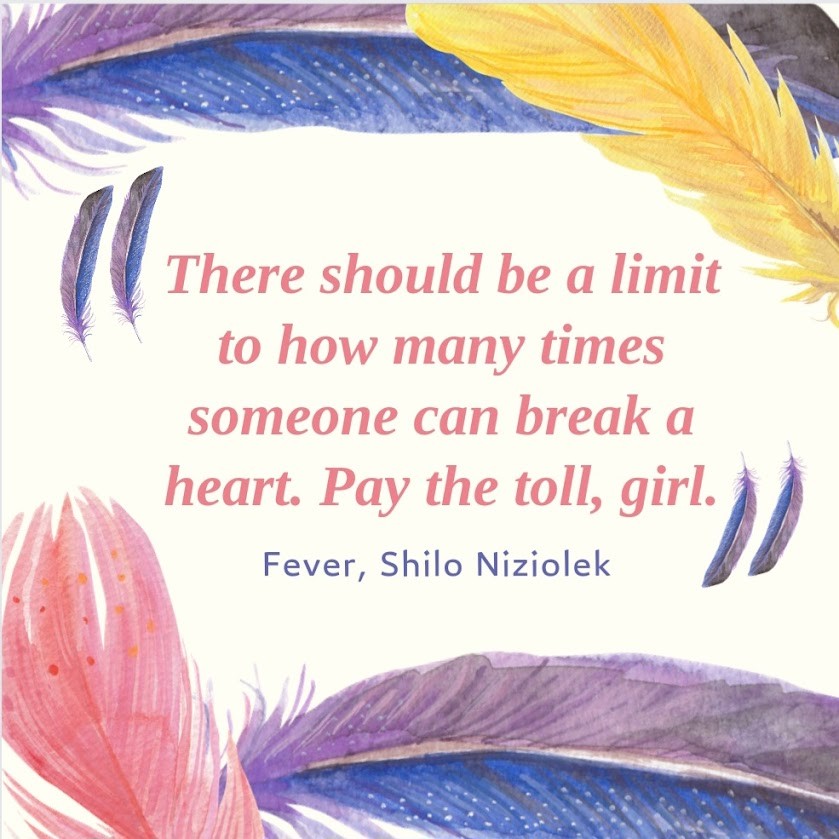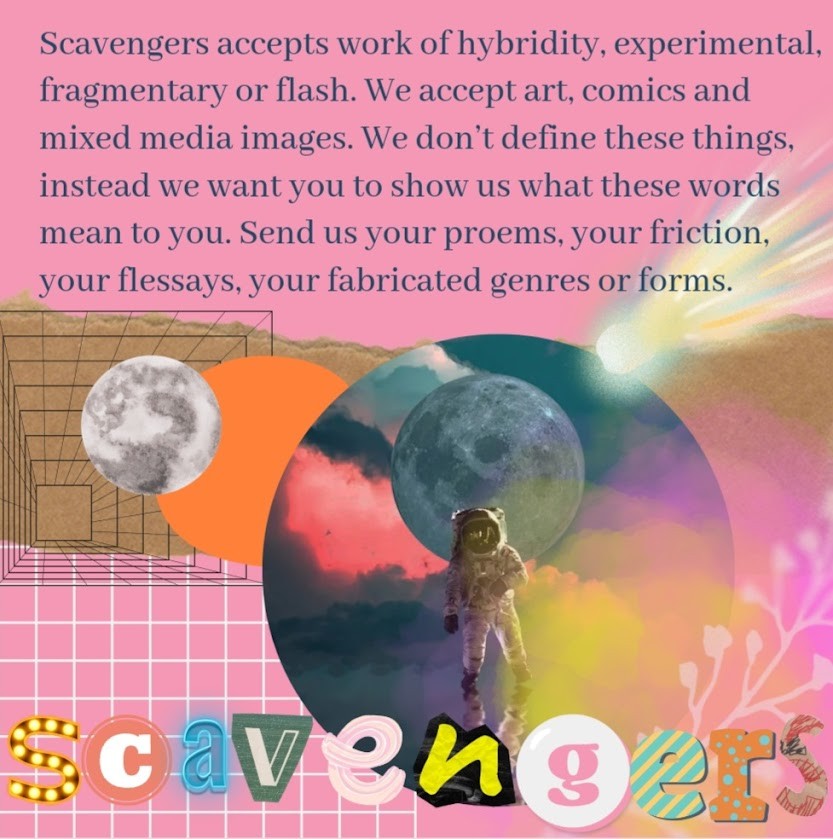We recently connected with Shilo Niziolek and have shared our conversation below.
Shilo, thanks for joining us, excited to have you contributing your stories and insights. Have you been able to earn a full-time living from your creative work? If so, can you walk us through your journey and how you made it happen? Was it like that from day one? If not, what were some of the major steps and milestones and do you think you could have sped up the process somehow knowing what you know now?
As an indie writer, I am nowhere near earning a full-time living from my creative work, and as long as I continue to write experimental creative nonfiction and poetry, the likelihood of that is incredibly unlikely. There are many problems in our current field, primarily the lack of funding and financial compensation for our work. This isn’t only true for doing the actual creative work, the writing, but is true from various perspectives throughout the field. I know small press owners and editors who make little to nothing from the work they do. I myself am the co-founder and editor of the literary magazine Scavengers, and not only is it unpaid work, but we aren’t yet in a position where we can pay contributors, being ran through the very new publishing company, Querencia Press, the same press who published my debut book Fever and my forthcoming debut poetry collection Atrophy. So often we hear that creative work is a labor of love, and that is true in so many ways, but also if we didn’t live in a culture that doesn’t value this work as vital and necessary to our human experience, instead treating it as frivolous as if we don’t all turn to art (writing, music, film, visual, etc.) when we are in the high and the lows of our lives for comfort, salvation, understanding and so much more, than we could turn this and other industries like it on their head and get rid of the starving-artist ideal that our culture has created. I came into the business already knowing this was the case for so many of us, so I parcel together a living through various means, not all related to being creative. I am currently an adjunct faculty at Clackamas Community College, teaching writing and literature classes. As mentioned, I am the editor of a new literary journal, Scavengers, of which our first issue was released this last spring. I have also recently been hired to teach an 10-week-long writing workshop through the Literary Arts Foundation here in Portland, Oregon this fall. On top of all that I find time scavenge a few moments for creative work. There are writers out there who are able to sustain a living through their creative pursuits, but they are few and far between. The majority of us are parceling together a living and scribbling poems in tiny notebooks, on apps on our phones, in the between moments.



As always, we appreciate you sharing your insights and we’ve got a few more questions for you, but before we get to all of that can you take a minute to introduce yourself and give our readers some of your back background and context?
I came to writing as so many of us writers do, which is through a love of books. My mom fostered this love for me as a very young age, and I have followed it into my current career after 8 years of studying literature and creative writing through various colleges and universities. My debut book, Fever, is a fragmentary memoir that explores themes of domestic abuse, trauma, chronic illness, sexuality, and love. Shortly after Fever was published my debut collection of essays, A Thousand Winters in Me, was released by Gasher Press. This collection is an exploration of grief in its various sizes and depths. My debut poetry collection, Atrophy, is forthcoming from Querencia Press, and explores similar themes, with a focus on chronic illness, disability, and trauma. All of my work uses nature as lens and mirror to reflect on and reflect back these experiences. When I proposed the idea for my literary journal, Scavengers, to the Editor in Chief of Querencia Press, it had long been a pipe dream that I harbored as a place for small form works of experimentation, hybridity, mixed media, and flash. Bringing it to life over the last year has been one of my greatest achievements and we are currently open for submissions until July 15th 2023. You can find details about Scavengers and the submissions process through the Querencia Press page. I think there are so many others out there who are doing the work of telling the stories of their experiences that are often overlooked and creating platforms for others to do the same and I am just happy to be one of the many voices out there doing so.



What do you think is the goal or mission that drives your creative journey?
My mission as a writer and as an editor is to amplify the voices and experiences and experimental writing styles that come from having lived multifaceted and complicated lives, particularly those of chronically ill and disabled peoples and those who have lived through and survived traumatic abuse,. Being chronically ill and disabled, or having survived traumatic abuse or other traumatic experiences, can literally change the neuropathways in ours brains, creating new ways of thinking, existing, and creating that are outside the norm of the large publishing industry complex, and while there have been a few writers who have broken through these barriers and found decent success with their experimental forms such as writers like Carmen Maria Machado, Ocean Vuong, Sophia Shalmiyev, Sarah Manguso, Terese Marie Mailhot, the majority of us working around trauma, disabilities and chronic illness can have a harder time breaking into the industry. These experiences are profound, life altering, and are often spoken about by those who haven’t experienced them in hushed tones. There are so much stigma around physical and mental illness, PTSD, and the like, and even though the culture does seem to be talking about these a bit more, it is still surrounded by fear. I value transparency above all else. I believe it is the pathway forward to connection, understanding, and a better future for us all.
Any insights you can share with us about how you built up your social media presence?
Building a social media presence is one of the most grueling parts of my various hats I wear in my field. Prior to Fever’s release October 2022, I had less than 300 followers on my instagram account @shiloniziolek , the primary social media site I use to share my creative works. I have now grown it to a little over a thousand followers over the last 9 months, which helps get my work seen by more folks, helps me advertise open calls for my literary journal, and in general helps me foster those connections with others in the industry who are of like-minded in their pursuit of art making, disability visibility, and building collective community care networks. I have grown this following through a mix of posts about, but not limited to, my own creative works, amplifying other creatives, making fun and/or relatable content about the experience or writing, and using the stories feature to share open calls for submissions from literary journals and presses as well as sharing the creative works of others. Building a social media presence is consistent work, which unfortunately can get in the way of actually doing the creative work and I am still learning how to manage that balance, though I do feel I’m getting better at it, particularly after changing my writer profile to a business account, allowing me to schedule posts.
Contact Info:
- Instagram: @shiloniziolek & @scavengers.lit
- Twitter: @shiloniziolek


